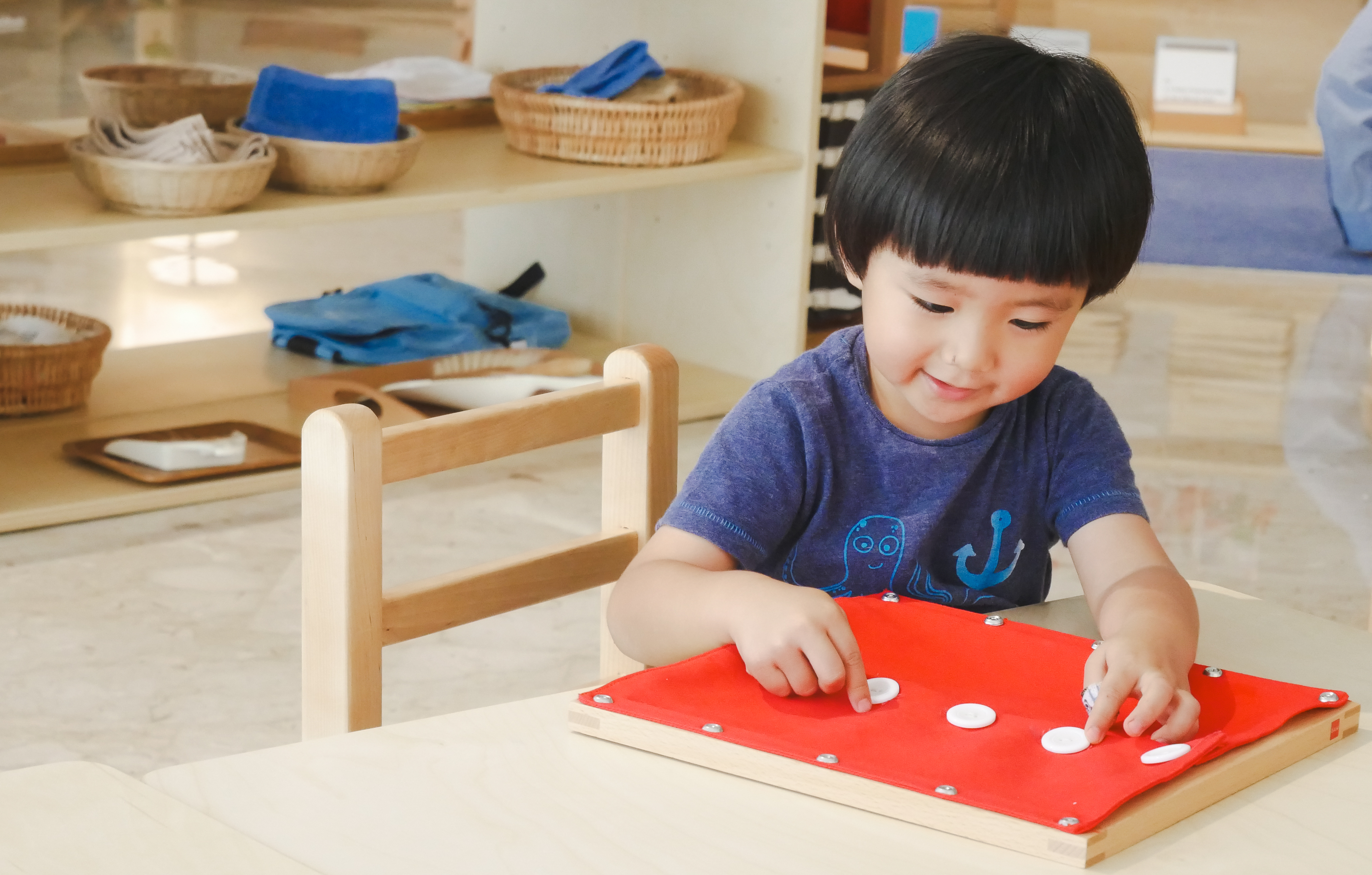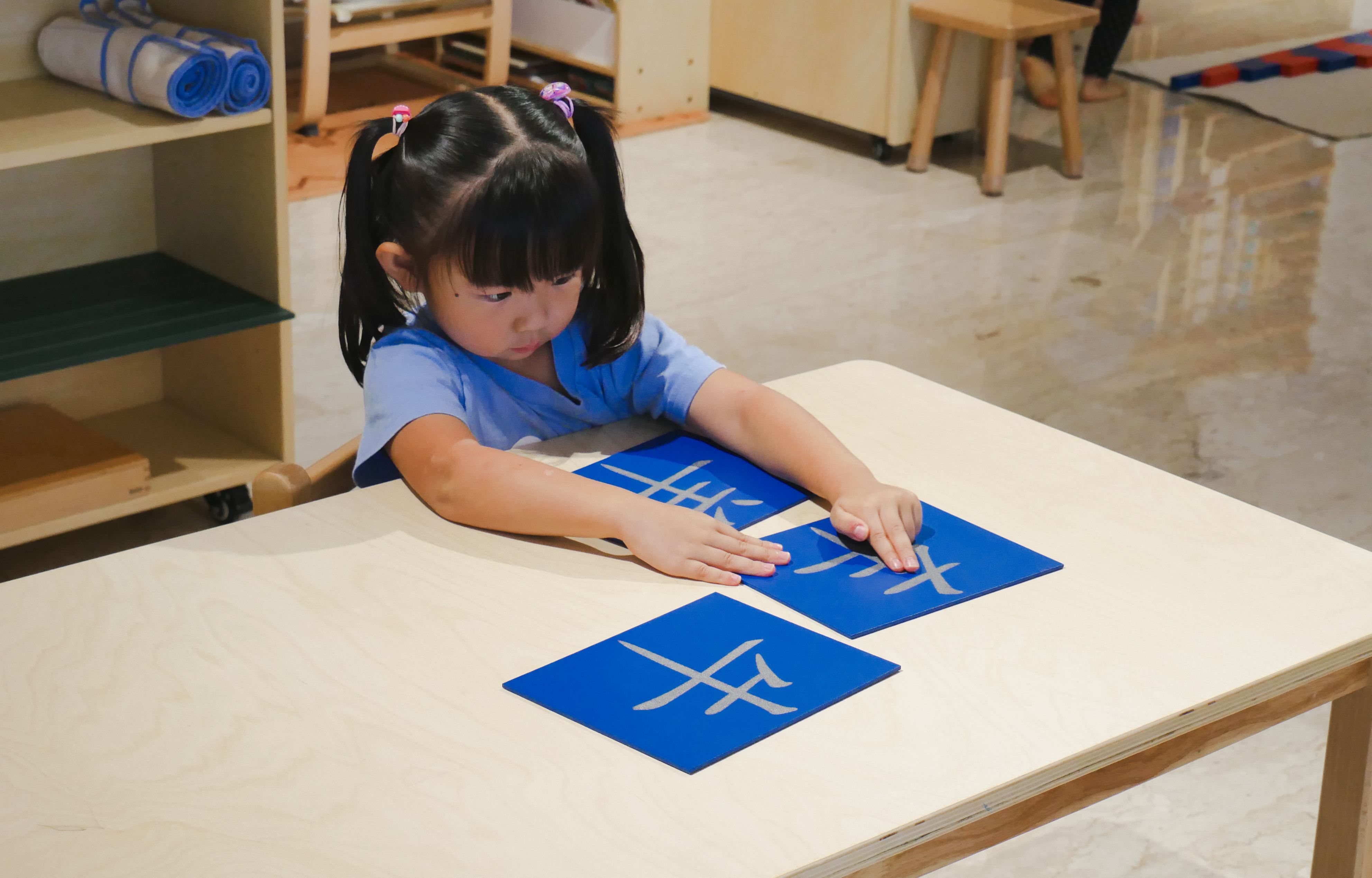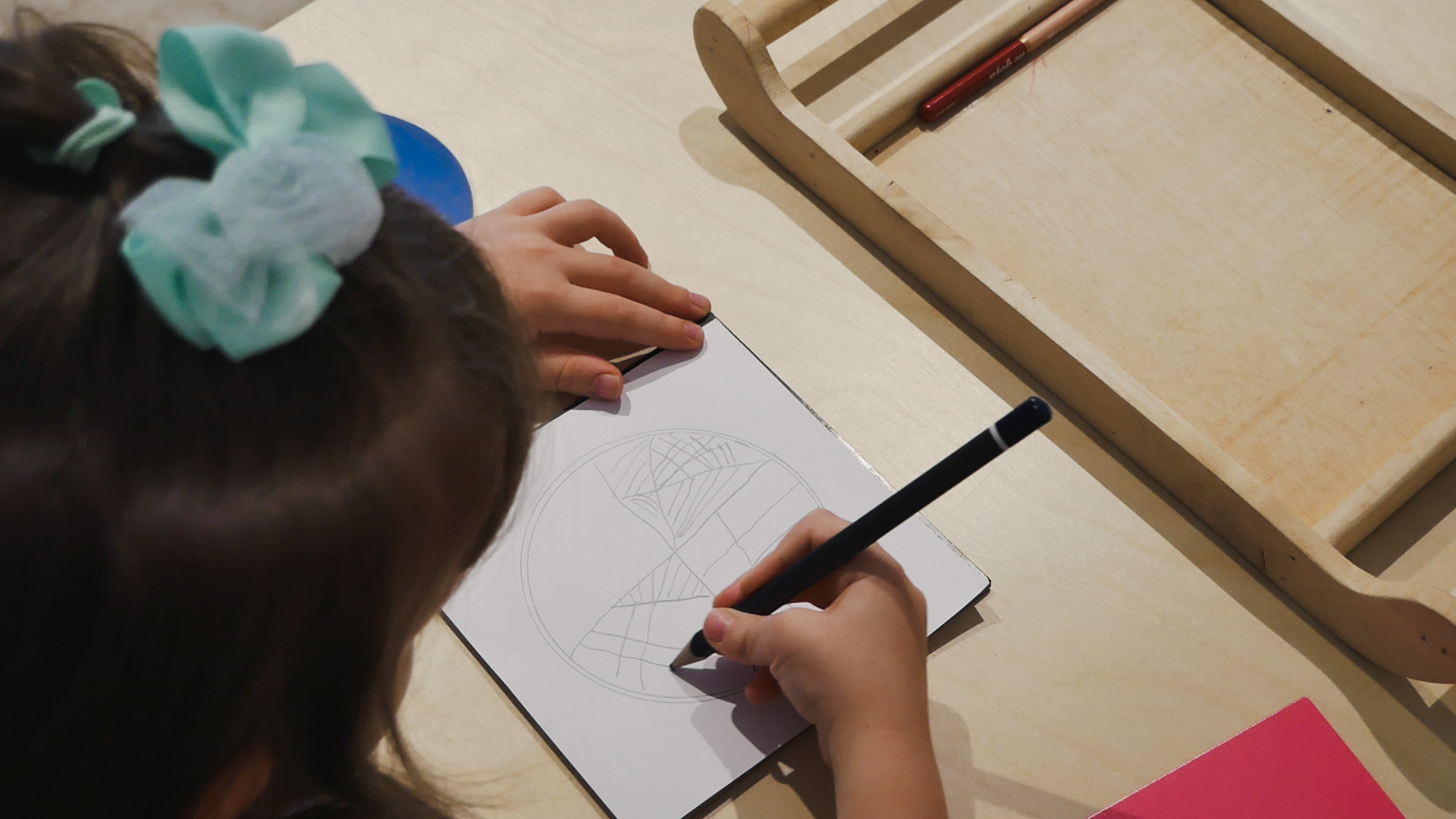
Children’s House
accelerating your child’s love of learning
The Children's House is a carefully-prepared, child-sized classroom in which children direct their own activity, building confidence and social skills while maximizing their own capability to learn and love learning. The Children's House includes five different classroom areas, each one with enticing and sequenced materials that each child will be introduced to over a three-year period, in response to individual developmental timelines.

Program Highlights
These lessons engage the child with real-world, purposeful tasks and tools, helping him see himself as capable and competent. The benefits are immediate, including concentration and precision of movement, and support long-term life skills like planning, memory, and problem-solving.
Children enjoy the beautiful sensorial materials and learn to compare and contrast, to discern slight differences, to place things in order, and so on. The materials activate the senses and help the child explore the world around her. The sensorial materials also highlight mathematical relationships, providing the foundation for understanding arithmetic, geometry and algebra.
Children are so excited to start reading and writing, using the hands-on Montessori materials such as sandpaper letters and movable alphabet. The children are able to explore creative expression and dive into reading, as they are empow- ered to write and read with ease through these foundational works.
The Montessori approach to math facilitates a deep understanding, not quick memorization. Hands-on materials ignite concrete problem-solving, paving the way for a smooth transition to abstraction.
Experimentation with physical sciences inspires a curiosity for the scientific world. Puzzle maps, flags, and cultural items expose children to varied cultures within our world - a helpful framework for later sciences and history studies.
Children’s House Curriculum
- Identifies sounds in a word
- Identifies all letter sounds
- Blends sounds into words
- Phonograms
- Sight words
- Reads for comprehension and demonstrate an understanding of text
- Speak clearly and in full sentences
- Enrichment of vocabulary
- Follows oral instructions
- Able to have a two-way conversation
- Uses correct pencil grip
- Forms lower case letters
- Aware of spacing and adherence to lines on a page
- Writes words/phrases using phonetic spelling
- Begins writing creatively
- Singing, rhythm activities
- Music appreciation
- Able to write 0 to 9
- Counts and recognizes teens
- Counts and recognizes numbers to 100 and above
- Practices skip counting
- Understands relationship among units, tens, hundreds, and thousands
- Reads large numbers (into the thousands)
- Demonstrates an understanding of exchanging
- Demonstrates an understanding of the concepts of addition, subtraction, multiplication, and division
- Begins memorizing the math tables
- Demonstrates an understanding of fractions being part of a whole
- Able to work mostly independently
- Able to ask for help when needed
- Art appreciation
- Drawing (open ended)
- Painting (open ended)
- Collage (open ended)
- Scissors use
- Able to walk carrying objects safely
- Ability to follow instructions for movement activities
- Works on simple food preparation activities with minimal support
- Able to use simple kitchen implements like a blunt knife or chopper, spreader, grater, etc.
- Names most basic shapes
- Identifies geometric solids
- Names the continents
- Knowledgeable of some countries in their continent and others
- Knowledgeable of the flags, foods, and cultures of different countries
- Awareness of different sensorial qualities in the world around them, such as long and short, rough and smooth, heavy and light, etc.
- Awareness of the natural world around them, such as early botany, weather, etc.
- Awareness of the animal classification and qualities of birds, fish, mammals, etc.
- Able to organize and execute a multistep task
- Works independently on a task for at least 15 - 30 minutes
- Demonstrates basic Grace and Courtesy, such as waiting one's turn to speak
- Speaks up confidently with a question or comment
- Joins in collaborative games
- Initiates and hold a conversation with a peer and adult



Sample Half Day Schedule
*Schedule varies by program & locationAll children arrive, greet their guide, wash hands, change shoes and choose work.
Children choose work based on program cirriculum. They choose individual work or small gorup work; guide presents individual or small group lessons.
Children wash hands and enjoy snacks with a friend. They sit with different partners each day, enjoying everyone’s company in the classroom while eating their snack.
Free play, organized games,. Children engage in purposeful gross motor activities using a vareity of physical education tools.
Guide read stories, sings songs and leads language games with children.
Children prepare for dismissal.

